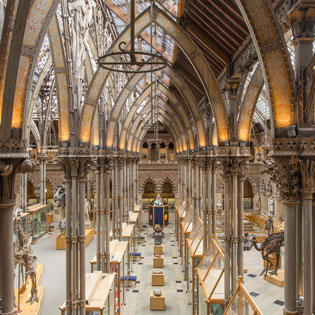
Reviving John Ruskin's legacy at the Oxford University Museum.
John Holmes University of Birmingham.
0000-0002-6215-502X

Paul Smith University of Birmingham.
0000-0002-5141-1577

With the unfolding crises of climate change, biodiversity loss and environmental degradation, the public understanding of science has never been more vital. Natural history museums are a major forum for science education and public engagement with science. They have high levels of public trust and unique access to collections and expertise, giving them both an opportunity and a responsibility to communicate the science of humanity's impact on the natural world. But while these museums have a large and loyal audience of families with children and people already interested in science and natural history, they need to reach out more widely if they are to inform public debate at large.
One key way for museums to do this is to mobilise the arts. Although we tend to think of science and the arts as separate fields – the 'two cultures' as C. P. Snow famously called them – the history of natural history museums shows that the arts were central to the foundation of many natural history museums in the nineteenth and early twentieth century. One of the earliest and most influential of these museums was Oxford University Museum of Natural History. Established in the 1850s, the building of this museum was a collaboration between Oxford University scientists and artists including the Pre-Raphaelite Brotherhood and the influential art theorist and social reformer John Ruskin. Ruskin himself went on to teach art at the museum in the 1870s, at a time when he was beginning to realise that industrialisation and commerce were causing potentially irreparable damage to the natural world.
Since 2016 Oxford University Museum of Natural History has been reviving Ruskin's legacy through sustained arts projects including exhibitions, poetry and new commissions. These have succeeded in drawing in large audiences who might not normally visit natural history museums, enabling the museum to communicate more widely the science behind topics from the loss of bee populations to the symbiotic relationship between bacteria and other organisms. The arts have also provided new means to engage the public more profoundly not just with science but with its consequences for how we understand, feel about and act on our relationship with the natural world. In keeping with Ruskin's own values, the museum has shown that the arts and sciences are indeed complementary. By bringing them together, natural history museums can fulfil their mission to inform and engage a wide public on questions crucial to our own survival